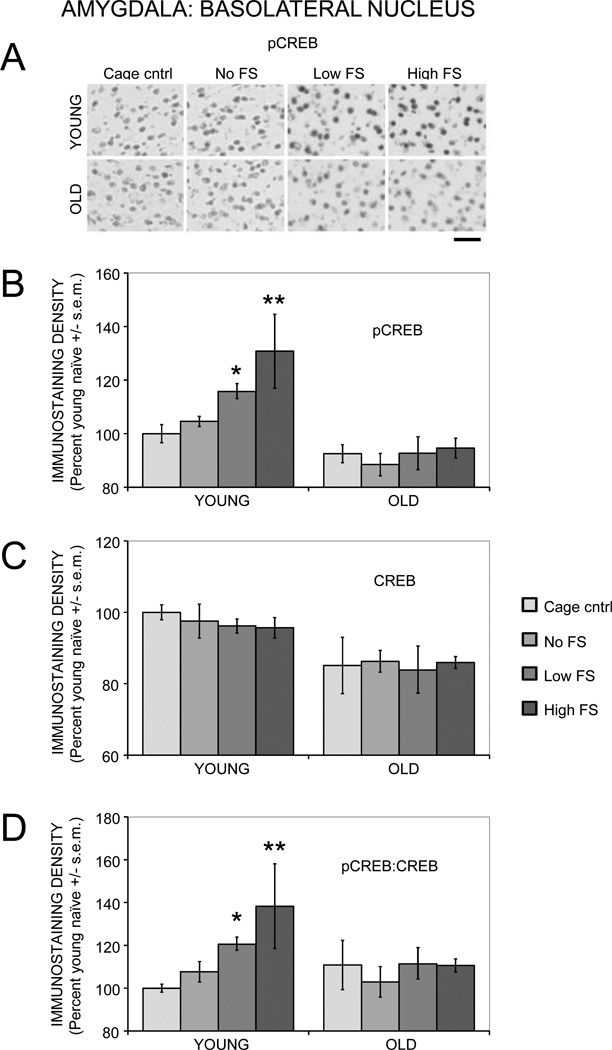Figure 5.
Age- and training-associated differences in pCREB and CREB immunoreactivity in the basolateral amygdala. (A) Representative photomicrographs of pCREB immunostaining. Scale bar = 50 µm. (B) Young rats had significantly enhanced pCREB levels following training with a low or moderate intensity foot shock, whereas old rats had training-related deficits in pCREB activation. (*) p < .05 vs. young cage controls. (**) ps < .01 vs. young cage controls and no shock. (C) Total CREB levels were significantly lower in old compared to young rats. (D) Young rats had significantly higher ratios of pCREB:CREB after training with a low or moderate intensity foot shock, whereas old rats had training-related deficits in pCREB:CREB ratios. (*) p < .05 vs. young cage controls. (**) ps < .05 vs. young cage controls and no shock.

